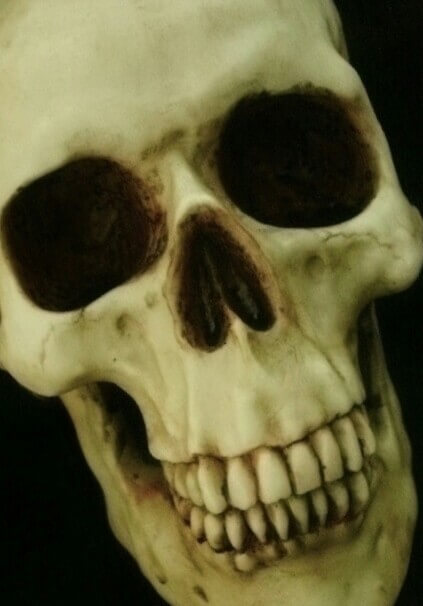Just like humans can suffer from human oddities, so can animals. The animal kingdom has a variety of interesting species. Unfortunately, sometimes during their stages of natural development, something goes wrong. The animal can have a condition that sets them far apart from the rest. They may have defects and limited abilities, but some are still able to live average life spans. Of course, animals can also become an oddity from the result of interbreeding between species.
Although it is believed that there are around 950,000 species of insects on our planet, until 2011, the number of species of animals was still unknown. It was once estimated that there are about 3-30 million. According to the Census of Marine Life scientists, the total number of species in the world is said to be around 8.7 million with a 1.3 million give or take. This includes all animals, plants, fungi, protozoa and chromista. Of the 8.7 million species, 7.77 million are animals.
Interestingly, there are said to be many more species that have yet to be discovered. In fact, scientists discover around 10,000-15,000 new species yearly. These high numbers of species will increase the odds of more extreme animal oddities entering into our world.
Conjoined Cattle Twins

The image above shows conjoined cattle twins taken Dupuytren Museum of pathological anatomy in Paris, France. Conjoined twins in cattle (like humans) are due to the lack of separation of an embryo (fertilized egg) following conception. Normally, embryonic layers are supposed to split around 3-12 days after conception, but conjoined twins end up splitting much too late. At approximately 13-15 days after conception, the separation process suddenly stops.
It is believed that due to this unusual delay, the prevention of the embryo separation will result in conjoined twins. Today, the exact cause for this extreme rarity is still unknown. However, there is another theory suggesting that conjoined twins may also occur from two separate embryos somehow fusing together during the early stages of development.
Like humans, conjoined twins in animals are a very rare occurrence, but can occur in many species. Typically, their survival is severely hampered due to the risks of sharing vital organs.
Chick With Two Beaks And Three Eyes

The above image shows a malformed chick that has three eyes and two beaks. It is part of the collections of the Zoological Museum of the University of Oulu in Oulu , Finland.
Diprosopus (also known as craniofacial duplication) is an extremely rare congenital disorder where some or all of the facial features are duplicated. Although one may mistakenly assume this anomaly is due to the incomplete separation of two embryos, this is false. It is actually the result of abnormal activity by a protein called SHH (sonic hedgehog) during embryonic development.
The SSH protein (along with its corresponding gene) plays a very important role for the craniofacial pattering. It governs the width of the facial features. However, too much of this protein will cause widening of the features and duplication of its structures. Too little will cause the opposite effect, leaving the feature development insufficient.
Due to brain and internal organ abnormalities, very few of these two-faced animals have survived. Most humans with diprosopus are stillborn with very few living past their birth.
Dog With Cleft Lip

In the United States, cleft lips are seen in humans at approximately 1 in every 1,000 births. Occasionally, they are also seen in dogs. The image above shows a one-year-old boxer with a cleft lip. A cleft lip is a physical defect where there is a gap in the line of the lips. The closure of the upper lip is incomplete. It is usually due to inheritance from parents. However, other factors such as dietary deficiencies and exposure to chemicals can also cause it.
Although the defect appears like it would cause problems for the dog’s drinking and eating, they are still usually able to eat and drink without much difficulty. It is still common to see their food and water drool from their mouths. To correct this defect, reconstructive surgery is required. For most cases, the usual recovery time is generally just two weeks.
The World’s Scariest Rabbit
A scary-looking rabbit in the state of Minnesota has earned the unlucky nickname “Frankenstein”. Shortly after a college student posted images and videos of this very unusual rabbit, it went viral.
Due to a rare disease (not yet confirmed), the bizarre rabbit is said to have a head full of tumors that protrude like horns. After getting thousands and thousands of video views, the rabbit quickly became an Internet sensation and is now known as The World’s Scariest Rabbit.
Zonkey Born In Italy
In 2013, a male zebra successfully impregnated a female donkey. The baby called a “zonkey” has stripped legs like a zebra and is brownish up top like a donkey. Similar to a mule, a zonkey cannot reproduce offspring. However, regardless being infertile, she is said to be in great health and still has normal libido. Although zonkeys are rare, there is one other known three-year-old zonkey living in Georgia.
Below is a video that shows the rarest and strangest animals in the world. You won’t believe your eyes!
Weird Animal Oddities: Deformed, Mutated & Genetically Modified
The world is filled with so many strange-looking creatures from a variety of different species. Have more amazing animal oddities to share on this post? Feel free to leave your comments below.


